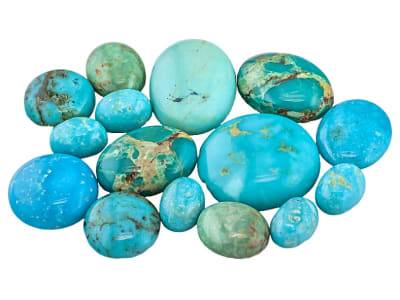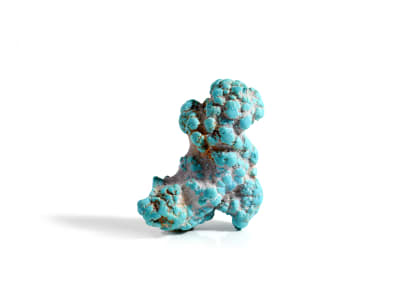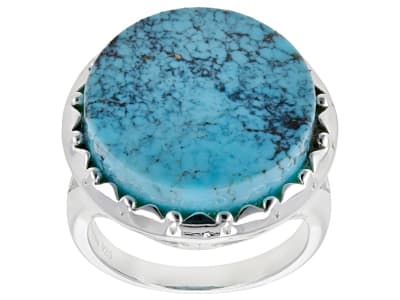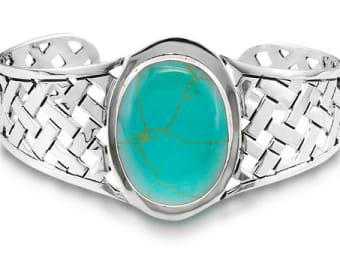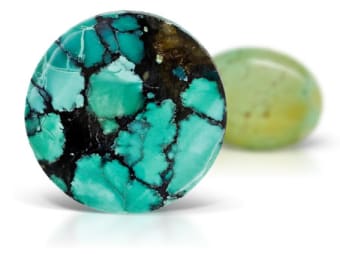Turquoise is one of the oldest known gem materials. Turquoise is a copper ore found in arid or semiarid regions. The earliest turquoise mines were in the Sinai. In the el-Qaa region archeologists have found turquoise in tombs that are believed to date to 5000 B.C.. Turquoise jewelry and objects for ornamentation have been found in Egyptian, Persian, Chinese and Aztec historic sites. Native Americans in the Southwest United States have a long history of using turquoise in jewelry. Turquoise mining in what is known as the United States dates back to 200 B.C.. Vast historic trade routes can be traced from the American Southwest into Mesoamerica. Turquoise can be blue or green depending on copper, iron, and zinc content.
General Information
LWUV: Inert to weak greenish yellow
Turquoise Colors
-
 Blue
Blue -
 Blue
Blue -
 Green
Green
Turquoise Spectra
We acknowledge the significant scientific contributions of John S Harris, FGA to the study of gemstone spectra and with deep appreciation to him, acknowledges the use of his images and related notes about gemstones and their spectra in the educational materials on this website.
Alternate Names
Turuqois, Gilson Synthetic Turquoise, Gilson Turquoise
Countries of Origin
Tanzania, United Republic Of; Colombia; Iran (Islamic Republic of); Cambodia; Philippines; United States of America; Ukraine; Thailand; United Kingdom of Great Britain and Northern Ireland; India; Canada; Unknown; China; Brazil; Italy; Mexico; Israel; Chile
History
Stunning sky blues, striking sea greens and rich robin's egg shades make turquoise a very desirable gemstone. Turquoise is almost always cut en cabochon or as a bead. It is seldom faceted. The dark and sometimes coppery-colored veins are part of the beauty of turquoise and the smooth cabochon cut serves to showcase these distinctive features. Turquoise may be the first stone ever mined. There is some evidence that suggests it may have been mined as far back as 4000 B.C. It is a 5 - 6 on the scale of hardness, but its porosity presented real challenges in the past, as turquoise changed color with time and wear. Today's gemstone treatments help alleviate that problem. The name, "turquoise," is relatively new to this blue stone. Pliny the Elder referred to it as callais from the Greek meaning "beautiful stone." It's thought that the name turquoise came into use somewhere around the 13th century.
Care
Gentle care, natural turquoise is very soft and porous, so avoid contact with oils and colored fluids. Clean with clean damp cloth only. Avoid hot water, household chemicals, steam and ultrasonic cleaners for stabilized stones.
Creation Classification
Lab Created
Some gems, like turquoise, are highly coveted but rare to find, much less in the sizes and quality people dream of owning. Laboratory created jewels offer you the best of both worlds. You get the beauty of a beloved gemstone, but at a budget friendly price. The term synthetic refers to a man-made material with a natural counterpart. The synthetic material replicates the chemical, optical and physical properties of the natural version with little or no variation.
Enhancement
Impregnated Turquoise
As it occurs naturally, turquoise is a soft mineral that is easily scratched. Its porous nature can allow the absorption of oils and fluids that can discolor it over time. To improve its durability and appearance, much of the turquoise on the market today is stabilized. One popular method of stabilization is impregnation, which fills the porous areas with a colorless agent, usually plastic.
